Contents
ENGAGED
DESIGNING FOR BEHAVIOR CHANGE
Amy Bucher
NEW YORK 2020
Engaged draws from the latest science on behavior change and compelling examples to teach design professionals to create world-class products that make big impacts on users lives. Clearly written and well-researched, Engaged is a great addition to any designers toolkit.
Scott Sonenshein,
Rice University professor and bestselling author of
Stretch and Joy at Work
An incredibly comprehensive and intelligent guidebook for designing products and services that change peoples lives.
Nir Eyal,
Bestselling author of Hooked and Indistractable
A book is only as good as the behavior it changes, and in this practical guide, Bucher focuses on combining rigorous application with an approachable voice. The product of over a decade of experience across a variety of domains, Engaged is a unique contribution that is well worth reading for anyone who wants to create change in the world, particularly in a digital medium.
Matt Wallaert,
Author of Start at the End:
How to Build Products That Create Change
Amys book is shockingly practical, showcases the impact of behaviors on design in practice, and provides clear tips and approaches you can immediately employ to benefit your work.
Alyssa Boehm,
User experience executive
Bucher proves in this step-by-step guide that behavior change design is valuable to all areas of design.
Lis Pardi,
Experience Design Manager, Toast
Interest in behavioral economics has exploded in recent years as product teams strive to empower people to achieve meaningful goals. For all on that journeyentrepreneurs, intrapreneurs, product managers, designers, researchers, engineersthis is a comprehensive playbook that translates behavioral economic theory into practical, actionable, and ethical design techniques.
Jen Cardello,
VP, Head of UX Research & Insights, Fidelity Investments
I have witnessed large audiences of people be mesmerized by Amy Buchers presentations on digital health and behavior change design. She makes the topic approachable bringing academic theory to life through relevant examples and actionable insights. This book proves to be an essential guide for digital health innovation, moving beyond shiny objects to define what will truly deliver engagement and improved outcomes.
Amy Heymans,
Co-founder and chief experience officer of Mad*Pow
This book demystifies the psychology behind behavior change and offers practical methods and examples for applying it to product design. A worthwhile introduction for anyone trying to help users achieve health, financial, or other goals.
Kim Goodwin,
Author of Designing for the Digital Age
Engaged
Designing for Behavior Change
By Amy Bucher
Rosenfeld Media LLC
125 Maiden Lane, Suite 209
New York, New York 10038
USA
On the Web: www.rosenfeldmedia.com
Please send errors to:
Publisher: Louis Rosenfeld
Managing Editor: Marta Justak
Interior Layout Tech: Danielle Foster
Cover Design: The Heads of State
Indexer: Marilyn Augst
Proofreader: Sue Boshers
2020 Amy Bucher
All Rights Reserved
ISBN: 1-933820-42-X
ISBN 13: 978-1-933820-42-2
LCCN: 2019956911
Printed and bound in the United States of America
For Bob and Melissa
My OGs
HOW TO USE THIS BOOK
Who Should Read This Book
This book is for anyone who wants to apply behavior change science to the design and development of digital products. Whether youre a social scientist working to change peoples behaviors through apps, websites, and other digital tools, or a product manager, researcher, or designer who wants to infuse behavior science into your work, this book is for you.
Whats in This Book
, A Kind of Magic: Psychology and Design Belong Together, introduces the concept of behavior change design and identifies some of the domains in which it is used. Youll learn about the self-determination theory of motivation, which provides the underlying structure for the rest of the book. According to self-determination theory, the most long-lasting motivation comes when peoples needs for autonomy, competence, and relatedness are supported.
Then, in , Pictures of Success: Measurement and Monitoring, youll learn about measuring and monitoring to ensure that your product is on track to achieve desired outcomes. Although most people think of outcomes assessment as something that happens late in the process, the seeds for a successful measurement strategy are planted at the very start of a behavior change design project.
The next chapters of the book talk about ways to support autonomy through digital design. , Weapon of Choice: Make Decisions Easier, focuses on making choices easier for people so that they can end up on the right path more quickly.
The next set of chapters focus on supporting competence. In , Harder, Better, Faster, Stronger: Designing for Growth, youll learn about structuring goals, milestones, and feedback to keep users moving toward success.
Relatedness can be supported through connection. In , A Matter of Trust: Design Users Can Believe In, I talk about trust, an essential ingredient in a healthy relationship between your user and your product.
Then, , Nothings Gonna Stop Us Now: Go Forth and Engage, I share how to carry behavior change design forward into your organization and your work.
Throughout the book youll meet other experts working in behavior change design in sections Ive called Perspective. These are people who have deep expertise in the topic of a chapter, and can either offer a deep dive or pro tips to help you as you learn. They are also all people whose work I admire, and many of them have influenced the way I practice my craft.
What Comes with This Book?
This books companion website ( rosenfeldmedia.com/books/engaged-designing-for-behavior-change/) contains a blog and additional content. The books diagrams and other illustrations are available under a Creative Commons license (when possible) for you to download and include in your own presentations. You can find these on Flickr at www.flickr.com/photos/rosenfeldmedia/sets/.
rosenfeldmedia.com/books/engaged-designing-for-behavior-change/) contains a blog and additional content. The books diagrams and other illustrations are available under a Creative Commons license (when possible) for you to download and include in your own presentations. You can find these on Flickr at www.flickr.com/photos/rosenfeldmedia/sets/.
FREQUENTLY ASKED QUESTIONS
Ive got a background in behavior science, but no talent for visual design. Can I do behavior change design?
Absolutely. I was a total amateur at all of the things I thought were design before I started working in the field (and am still not very good at many of them). My strengths are research, strategy, and evaluation, so I partner with people who bring the visual and interaction design and application development chops. I have colleagues who have stronger design skills and less research experience, so they team up accordingly. Its all about building a team that can complement each other. offers tips for bringing behavior change into your work, regardless of your background.
Is behavior change design actually necessary?
If I didnt think behavior change design was important, then thered have to be something deeply wrong with me to have spent this much time and effort writing a book about it. Behavior change design helps make products more engaging, which means more people want to use them. Thats good for business. And if your product is actually trying to change peoples behavior, which is true of most products in industries like health, education, and sustainability, then behavior change design will hugely increase the odds it works. Learn more about how to measure the effects of behavior change design in .



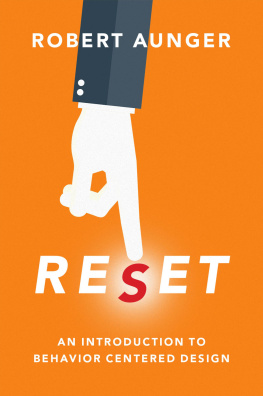
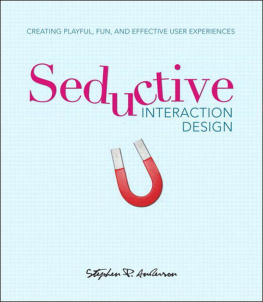
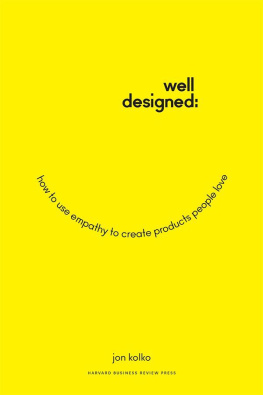
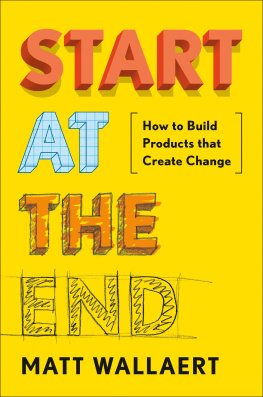
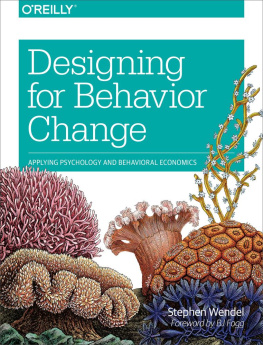



 rosenfeldmedia.com/books/engaged-designing-for-behavior-change/) contains a blog and additional content. The books diagrams and other illustrations are available under a Creative Commons license (when possible) for you to download and include in your own presentations. You can find these on Flickr at www.flickr.com/photos/rosenfeldmedia/sets/.
rosenfeldmedia.com/books/engaged-designing-for-behavior-change/) contains a blog and additional content. The books diagrams and other illustrations are available under a Creative Commons license (when possible) for you to download and include in your own presentations. You can find these on Flickr at www.flickr.com/photos/rosenfeldmedia/sets/.